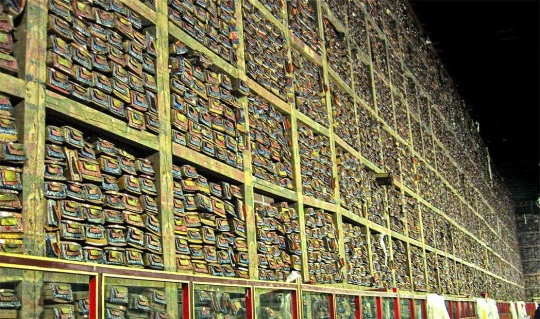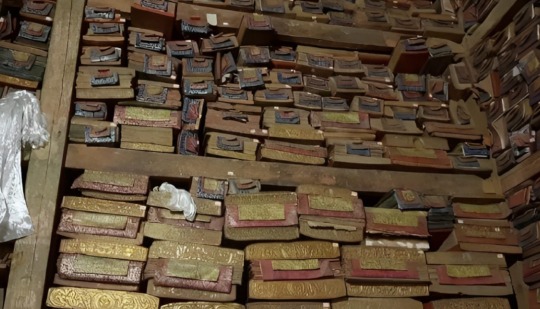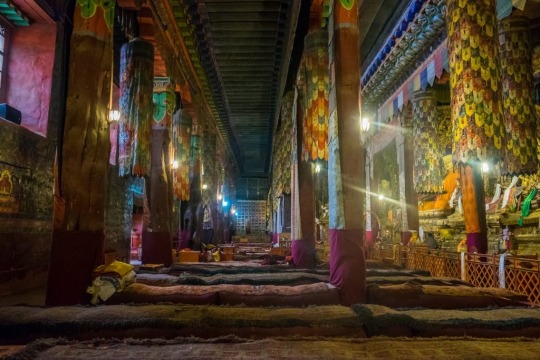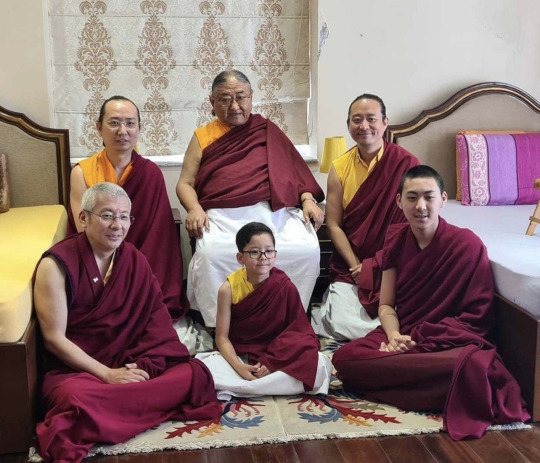#Khon Konchog Gyalpo
Explore tagged Tumblr posts
Text


If you are still heart broken about the destruction of the Alexandria library, you will be happy to hear in a far away world, there’s a vast library hidden from the world for centuries, contains 84,000 books, which are planned to be digitised, translated and share with the world.
The Sakya Monastery in Tibet, founded in 1073 by Khon Konchog Gyalpo, is renowned for its vast library of ancient manuscripts, many of which remain untouched for centuries.
Most of these texts are Buddhist scriptures, meticulously handwritten in various languages like Chinese, Tibetan, Mongolian, and Sanskrit. But the depth of this collection is vast. It isn’t limited to religious teachings; it expands into the realms of literature, history, philosophy, the stars above with astronomy, the logic of mathematics, the beauty of art, and even the practical wisdom of agriculture.
The scale of this library is staggering. Picture traditional bookshelves stretching 200 feet and soaring to 33 feet, all packed with a whopping 84,000 books! Among these, there’s a standout: a single scripture that tips the scales at a massive 1,100 pounds, claiming the title of the heaviest in the world. Thanks to the region’s dry climate, the library also boasts a collection of delicate palm-leaf manuscripts, preserved in near-perfect condition.
The library is not open to the general public but is accessible to members and visiting scholars with permission. Efforts are underway to digitize these manuscripts, making them more widely available for research and study. This initiative highlights the library's role as a bridge between ancient wisdom and modern scholarship, offering invaluable insights into Tibetan culture and knowledge.
Now, these precious papers give us a peek into Tibet’s history. They show us how people lived, what they believed, and how they dreamed. Thanks to the Sakya Monastery, a whole world has been brought back to life from long ago. Everyone can learn and be amazed by the wonders of the past.
[Sources]:
*Earthly Mission: Tibet's Great Sakya Library (https://earthlymission.com/tibet-great-sakya-library-84000-scrolls-heaviest-scripture-world/)
*History Enhanced: Unveiling the Unseen (https://historyenhanced.com/unveiling-the-unseen-84000-unread-manuscripts-from-sakya-librarys-timeless-tales-discovered/)
*The Historians: The Secrets of Sakya Monastery Library (https://thehistorians.org/2023/12/24/the_secrets_of_sakya_monastery_library_in_tibet/)




#Tibet#Sakya Monastery#Khon Konchog Gyalpo#Ancient manuscripts#Buddhist scriptures#Mongolian#Sanskrit#Chinese#Tibetan#Religious Teachings#Arts#ancient literature#ancient history#ancient philosophy#astronomy#ancient agriculture#ancient wisdom#ancient library#heaviest book in the world
34 notes
·
View notes
Text

The Sakya school is one of four major schools of Tibetan Buddhism, the others being the Nyingma, Kagyu, and Gelug. It is one of the Red Hat Orders along with the Nyingma and Kagyu. The name Sakya ("pale earth") derives from the unique grey landscape of the Ponpori Hills in southern Tibet near Shigatse, where Sakya Monastery, the first monastery of this tradition, and the seat of the Sakya School was built by Khon Konchog Gyalpo (1034-1102) in 1073.
The Sakya tradition developed during the second period of translation of Buddhist scripture from Sanskrit into
Tibetan in the late 11th century. It was founded by Drogmi, a famous scholar and translator who had studied at the Vikramashila directly under Naropa, Ratnakarasânti, Vagishvakirti and other great panditas from India for twelve years.
Khon Konchog Gyalpo became Drogmi's disciple on the advice of his elder brother.
The tradition was established by the "Five Venerable Supreme Masters" starting with the grandson of Khonchog Gyalpo, Sachen Kunga Nyingpo, who became known as Sachen, or "Great Sakyapa" Sachen Kunga Nyingpo (1092-1158)
Sonam Tsemo (1142-1182)
Jetsun Dragpa Gyaltsen (1147-1216)
Sakya Pandita (1182-1251)
Drogön Chögyal Phagpa (1235-1280)
Buton Rinchen Drub (1290-1364) was an important scholar and writer and one of Tibet's most celebrated historians. Other notable scholars of the Sakya tradition are the so-called "Six Ornaments of Tibet:"
Yaktuk Sangyey Pal
Rongton (1367-1449)
Ngorchen Kunga Zangpo
Zongpa Kunga Namgyel
Gorampa (1429-1489)
Sakya Choken (1428-1507)
The leadership of the Sakya School is passed down through a hereditary system between the male members of the Sakya branch of the Khon family.
---
To cause yourself and your life to be intensely filled with happiness, do everything you can to give happiness to others.
Do all the good you can. By all the means you can. In all the ways you can. In all the places you can. At all the times you can. To all the people you can.
As long as ever you can.
May you be well and happy my friends.
I am grateful for your interest in Dharma and following my blog.
Any mistakes are solely my own and not the fault with the Dharma or masters quoted here.
#buddha#buddhist#buddhism#dharma#sangha#mahayana#zen#milarepa#tibetan buddhism#thich nhat hanh#dhammapada#karma#mindfulness#dakini#four noble truths#pure land#equanimity#avalokitesvara#manjushri#bodhisattva#tsongkhapa#padmasambhava#atisha#amitaba buddha#shantideva#green tara#vajrayogini#vajrayana#vajrapani#medicine buddha
1 note
·
View note
Link
Sakya monastery is the principal monastery of the Sakyapa Sect of Tibetan Buddhism. The location of the monastery is in Sakya County. It is about 160 kilometers southwest of Shigatse, on the road to Tingri in Tibet. Khon Konchog Gyalpo built it in 1073. Especially, it is on the hillside with gray earth surrounded, it means the “Grey Soil” in Tibetan. Divided by river, this monastery has two parts. There are the northern part (on the hillside) and the southern part (lies in the valley). https://tibetuniversaltravel.com/attractions-in-tibet-tourist-destination/shigatse/sakya-monastery/
0 notes